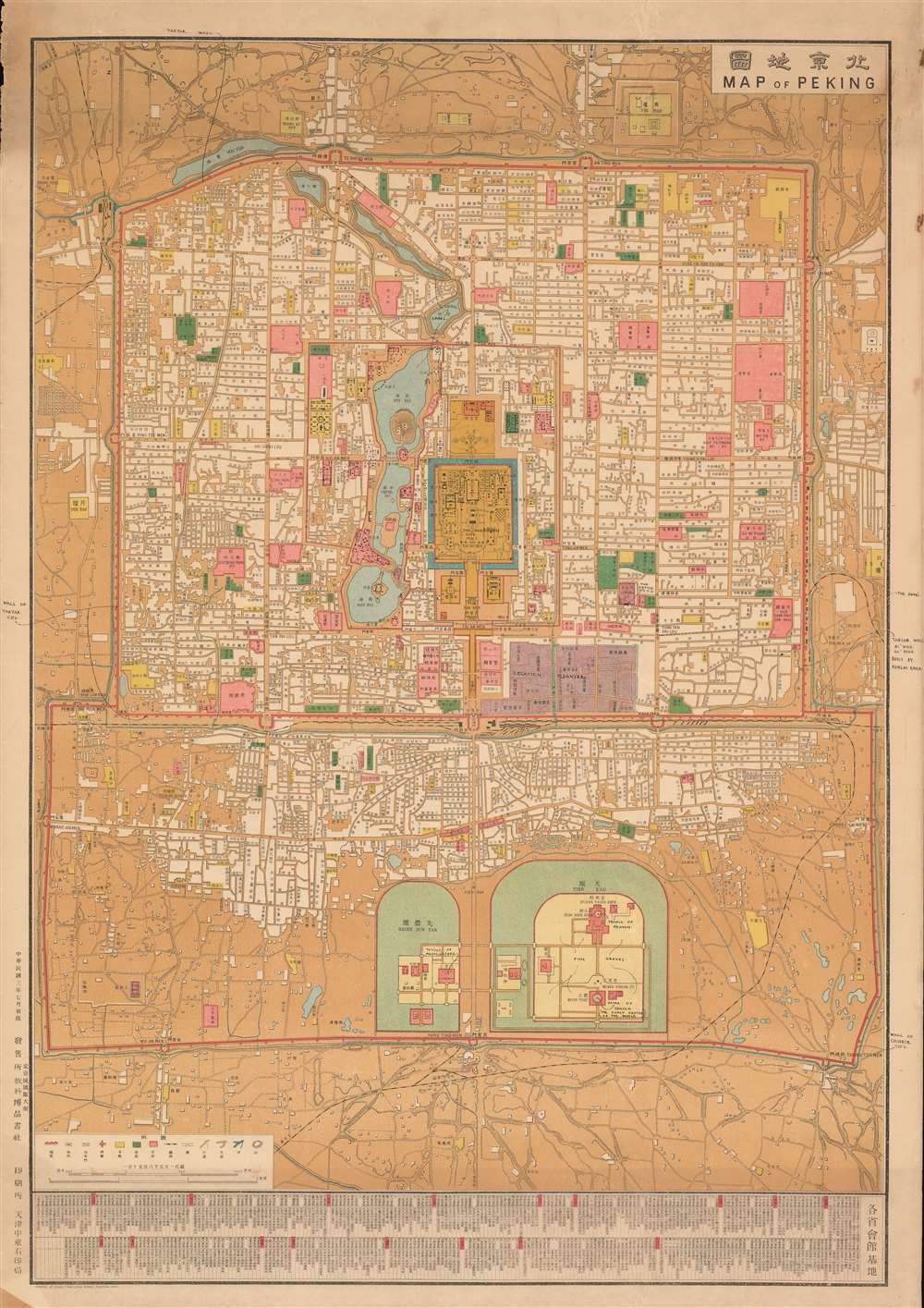This item has been sold, but you can get on the Waitlist to be notified if another example becomes available, or purchase a digital scan.
1914 Chung-Tung Lithography Map of Beijing, China
Beijing-chungtunglitho-1914
Title
1914 (dated) 30.25 x 21.25 in (76.835 x 53.975 cm) 1 : 15850
Description
China under the Beiyang
Under the leadership of the Qing general Yuan Shikai (袁世凱)the Beiyang Army seized control of China following the 1912 abdication of Xuantong Emperor, Pu Yi, the last Qing Dynasty emperor. Yaun and the Beiyang Army initially supported the Qing, but when the regime was clearly doomed, he negotiated abdication edict with the Xinhai Revolution and Sun Yat-Sen, establishing himself as the first President of the Republic of China. The Beiyang initially attempted a series of modernization projects, creating western style bureaucratic, fiscal, judicial, educational systems, but ultimately Yuan Shikai was a monarchist, and, when he attempted to establish himself as Emperor, the movement fell into warlordism. Yuan Shikai died in 1916, but his troubled government continued until about 1928 when Beijing was occupied by the Nationalists.Chromolithography
Chromolithography is a color lithographic technique developed in the mid-19th century. The process involved using multiple lithographic stones, one for each color, to yield a rich composite effect. Oftentimes, the process would start with a black basecoat upon which subsequent colors were layered. Some chromolithographs used 30 or more separate lithographic stones to achieve the desired effect. Chromolithograph color could also be effectively blended for even more dramatic effects. The process became extremely popular in the late 19th and early 20th centuries, when it emerged as the dominate method of color printing.Publication History and Census
This map was published in Tientsin on June 3, 1914 by the Chung-Tung Litho Works (中东石印局民国). We are aware of only one edition, but all examples are rare with some estimating that as few as 3 now survive in China - although we think there are most likely more. The reason for this map's rarity is its clear support for the Beiyang, and the suppression of such materials that followed that regime's 1928 fall. The OCLC identifies only a single example, located at Harvard.Cartographer
Chung-Tung Litho Works (中东石印局民国, 1912 - c. 1930) was a lithographic printer based in the concession city of Tientsin or Tianjin, China, during the early 20th century. The rise of the Chung-Tung Litho works roughly coincides with the establishment of the Beiyang Government in 1912 and the fall of said government in 1929. Their corpus is small, including a map of Tientsin (1912), reissued multiple times, and a 1914 map of Beijing, but the quality of their work was extremely high. Most of their maps are chromolithographs, making them one of the earliest Chinese chromolithographic presses in Asia. More by this mapmaker...

